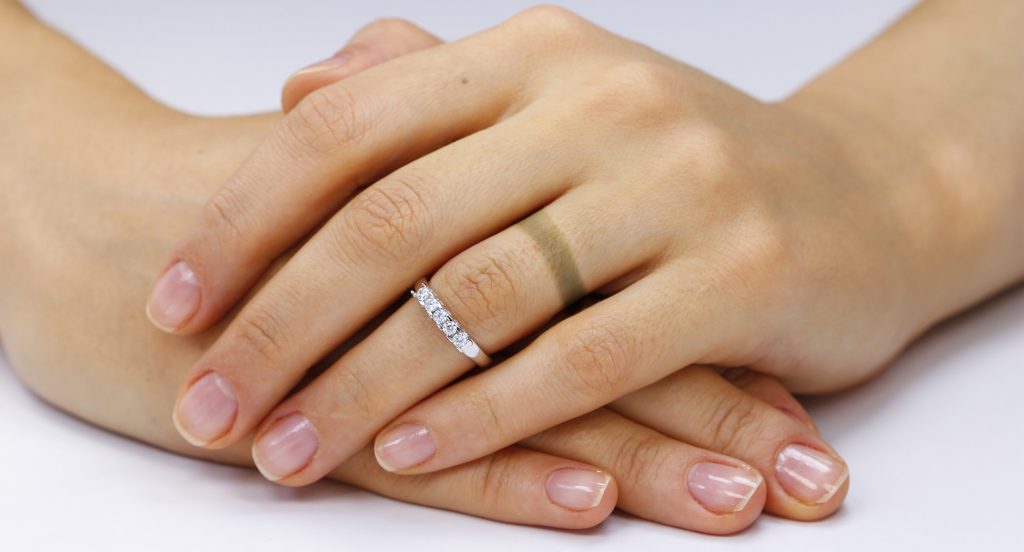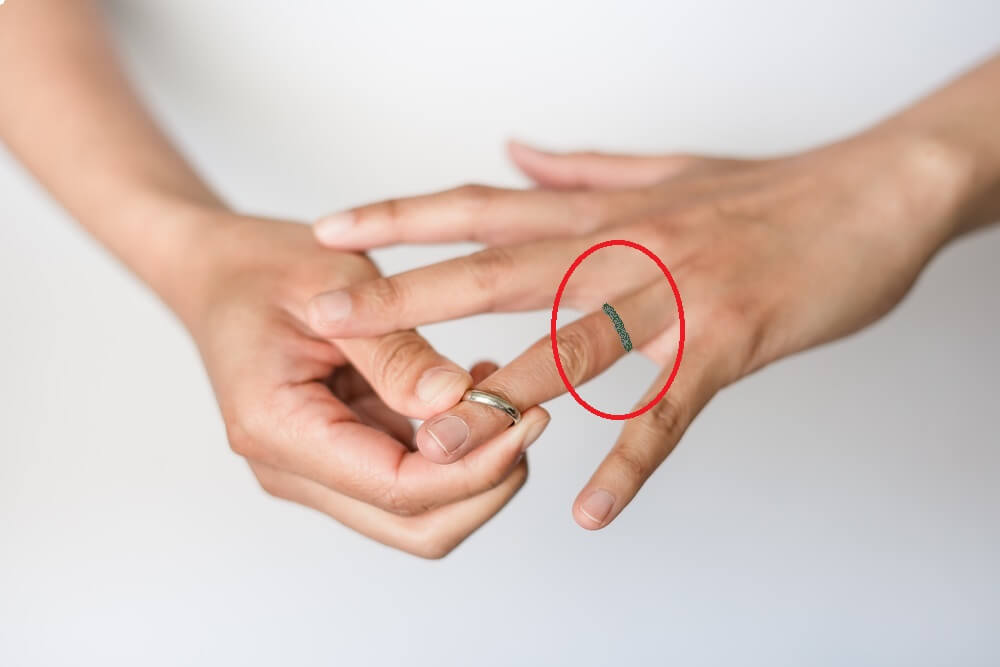Views: 0 Author: Rachel Wynn Publish Time: 2025-05-23 Origin: Site











Stainless steel typically does not turn skin green, as it is highly resistant to corrosion and oxidation due to the chromium in its composition. However, in rare cases, skin discoloration can occur, usually due to nickel sensitivity. People with a nickel allergy may experience a reaction when the nickel content in lower-grade stainless steel interacts with their skin's acids, causing a greenish tint. Additionally, poor-quality stainless steel or prolonged exposure to sweat, moisture, or chemicals may also lead to minor skin irritation or discoloration. To avoid this, it's recommended to choose high-quality 316L surgical-grade stainless steel, which is hypoallergenic and less likely to cause such reactions.
Stainless steel is an alloy composed primarily of iron, chromium, and nickel. It is known for its resistance to corrosion, making it a popular material in jewelry, watches, body piercings, and other personal accessories. The key to understanding whether stainless steel causes skin discoloration lies in its composition.
Chromium: The chromium in stainless steel creates a thin protective layer of chromium oxide, which prevents the steel from rusting or reacting with elements in your skin.
Nickel: In some stainless steel alloys, nickel is added to enhance strength and resistance to corrosion. For a small percentage of people, this nickel content can cause allergic reactions, leading to skin irritation or discoloration.
While stainless steel is generally safe for the skin, there are a few reasons why some individuals may still experience skin discoloration or irritation:
Nickel Sensitivity or Allergies: Nickel is a common allergen. People with nickel allergies are at higher risk of experiencing a reaction to stainless steel jewelry that contains nickel, which may result in a greenish tint on the skin. The green color is due to the formation of nickel salts, which are a byproduct of the interaction between the metal and sweat or acids in the skin.
Low-Grade Stainless Steel: Not all stainless steel alloys are created equal. Lower-quality stainless steel may contain impurities or higher levels of nickel and other reactive metals, increasing the likelihood of skin reactions. These lower-grade alloys are often found in cheaper jewelry.
Skin pH and Sweat: The natural acidity or alkalinity of your skin (the pH level) can influence how metals react. For example, sweat, which contains salts and acids, can interact with stainless steel, leading to minor discoloration. However, this is generally more of a concern with lower-quality stainless steel.

When it comes to skin discoloration, not all metals are created equal. Here is a comparative look at stainless steel and other common metals used in jewelry:
| Metal Type | Common Uses | Risk of Skin Discoloration | Does It Turn Skin Green? |
|---|---|---|---|
| Stainless Steel (316L) | Jewelry, watches, piercings | Very low | Rarely |
| Copper | Bracelets, rings | High | Yes |
| Brass | Decorative jewelry | Medium | Sometimes |
| Silver (Sterling) | High-end jewelry | Low | Occasionally |
| Gold (Low Karat) | Jewelry | Low–Medium | Rarely |
As shown in the table, high-quality stainless steel, particularly 316L (surgical-grade stainless steel), is highly resistant to causing skin reactions. Other metals like copper and brass are much more likely to cause the skin to turn green due to chemical reactions with sweat.
Alloy Composition: Not all stainless steel alloys are created equal. Some may contain higher levels of nickel or other metals that are more likely to interact with the skin.
Sweat and Acidity: If you have acidic skin or sweat heavily, there may be a greater chance of a reaction with the metals in your jewelry.
Quality of the Stainless Steel: Low-quality or poorly treated stainless steel may have impurities or reactive alloys that can cause skin discoloration. Always look for jewelry made with high-quality alloys such as 316L stainless steel.
Environmental Factors: Prolonged exposure to water, salt, chlorine (e.g., from swimming pools), or certain chemicals (such as lotions or perfumes) can accelerate the reaction between metals and skin.

If you're concerned about potential discoloration or irritation from stainless steel jewelry, consider these strategies:
Choose High-Quality Stainless Steel: Always opt for high-grade stainless steel, specifically 316L (surgical steel), which is highly resistant to corrosion and reactions with skin.
Clean Your Jewelry Regularly: Regular cleaning helps prevent buildup of oils, dirt, or sweat, which could cause reactions. Use a soft cloth and mild soap to clean your stainless steel jewelry.
Avoid Excessive Sweat Exposure: Remove jewelry before exercising or swimming, as sweat and water can accelerate reactions between the skin and metal.
Consider Hypoallergenic Coatings: If you have sensitive skin or a nickel allergy, you may want to choose jewelry that has been coated with a hypoallergenic layer, such as platinum or rhodium, which can act as a barrier between the metal and your skin.
A: Yes, stainless steel is generally safe for sensitive skin, especially 316L surgical-grade stainless steel. However, individuals with nickel allergies should check the alloy composition and avoid jewelry with high nickel content.
A: Stainless steel jewelry may cause skin discoloration due to nickel allergies or reactions with sweat. Poor-quality stainless steel or excessive exposure to acidic sweat can also lead to discoloration.
A: Choose high-quality stainless steel (look for 316L surgical steel), clean your jewelry regularly, and avoid wearing it during activities that cause excessive sweating. If you have a nickel allergy, consider hypoallergenic jewelry coatings.
Q4: What are the benefits of 316L stainless steel?
A: 316L stainless steel is highly corrosion-resistant, durable, and non-reactive with most skin types. It's commonly used in surgical implants, body piercings, and high-quality jewelry due to its hypoallergenic properties.
A: 316L stainless steel is highly resistant to tarnishing and rusting. However, lower-quality stainless steel alloys may corrode over time, particularly if exposed to harsh chemicals or moisture.
while stainless steel is a durable and hypoallergenic material that rarely causes skin discoloration, factors like nickel allergies, poor-quality alloys, and environmental conditions can lead to reactions. By choosing high-quality 316L stainless steel and maintaining proper care of your jewelry, you can enjoy its benefits without worrying about skin irritation or green discoloration. If you do experience any issues, consulting a dermatologist and switching to higher-grade materials can help mitigate the problem.






